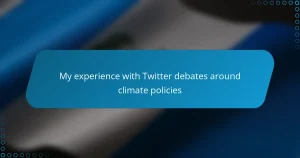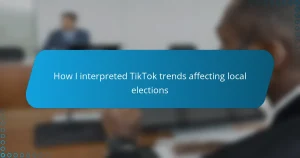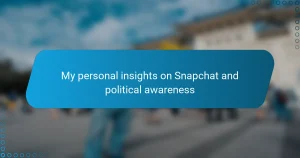Key takeaways
- US political commentary is shaped by emotional undercurrents, blending analysis with personal values and societal fears.
- CNN’s election coverage prioritizes immediacy, often sacrificing depth and nuanced discussion in favor of breaking news.
- Media analysis reveals biases in narratives and the importance of verifying claims with independent data and tools.
- Maintaining skepticism and seeking diverse perspectives is essential for a fuller understanding of media coverage.
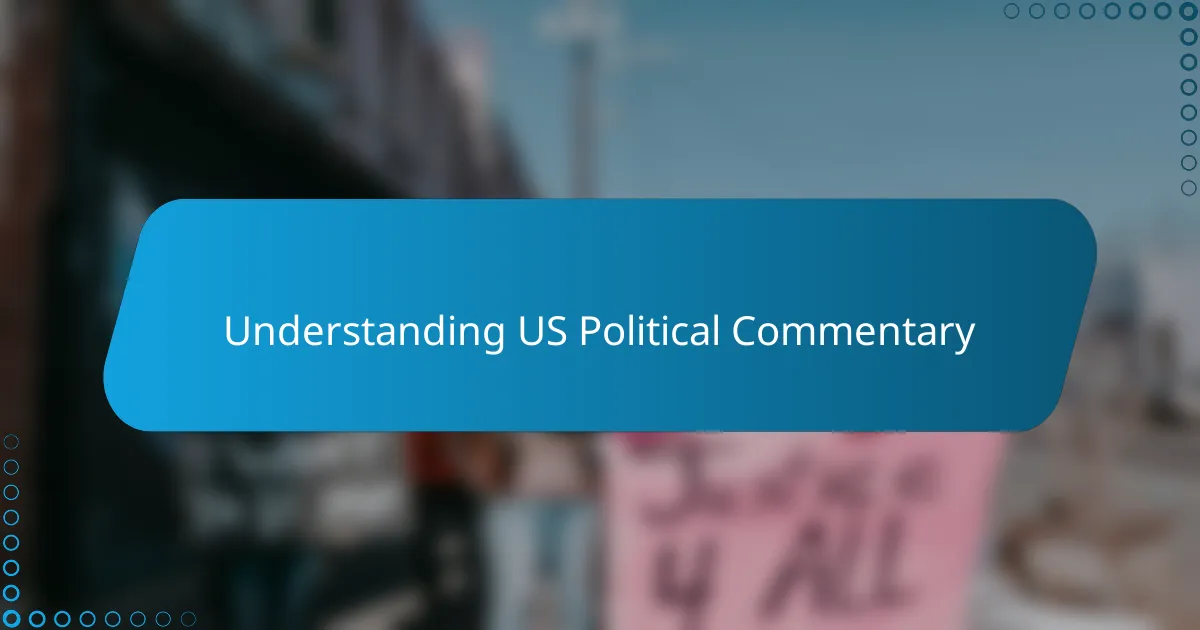
Understanding US Political Commentary
Political commentary in the US often feels like a whirlwind, doesn’t it? From my experience, it’s not just about opinions but about the underlying values and fears that shape those voices. When I first dove into this world, I was struck by how much emotion fuels the debate, making it both compelling and challenging to untangle.
What do we really expect from political commentary? For me, it’s a mixture of analysis and passion, a mirror reflecting society’s hopes and anxieties. Sometimes, I wonder if we listen more to the anger or the insights — and that tension keeps the dialogue alive, even when it’s tough to follow.
In trying to understand US political commentary, I’ve found it essential to recognize the blend of fact and feeling. It’s not just information; it’s storytelling that connects with people’s identities. This realization helped me approach the coverage with a more critical but empathetic eye, which changed how I consume and reflect on political news.
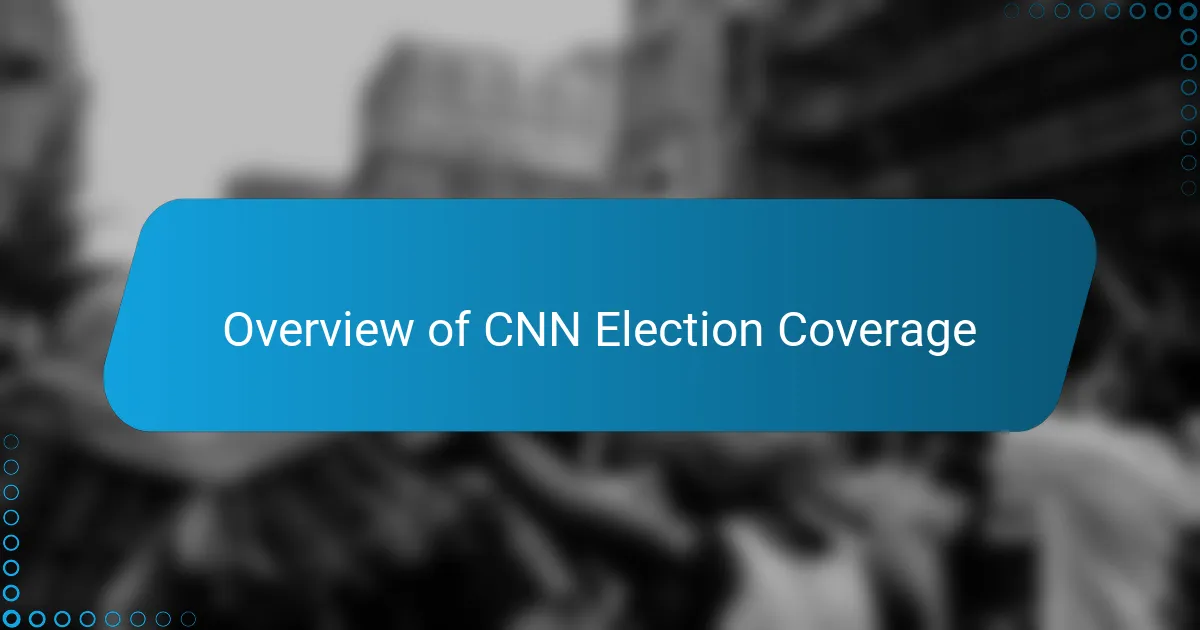
Overview of CNN Election Coverage
CNN’s election coverage is hard to miss during election season. From my perspective, they aim to blend real-time updates with in-depth analysis, but the balance between breaking news and interpretation sometimes feels uneven. Have you noticed how their prime-time segments often lean heavily on high-profile interviews and pundit debates, which can both illuminate and confuse?
What struck me most was the pacing of their coverage. There’s a rush to be first with results and projections, which sometimes sacrifices nuance. I’ve caught myself asking, “Are we getting the full story, or just the highlights that drive ratings?” This tension felt like a dance between urgency and thoroughness throughout the election nights I followed closely.
Another thing I found interesting is CNN’s use of visuals and data graphics. They try to make complex electoral processes more accessible, and in many cases, it really helped me understand shifting dynamics. But sometimes, I wondered if the flashy graphics distracted from deeper issues, like voter suppression or campaign financing, which deserve just as much attention.
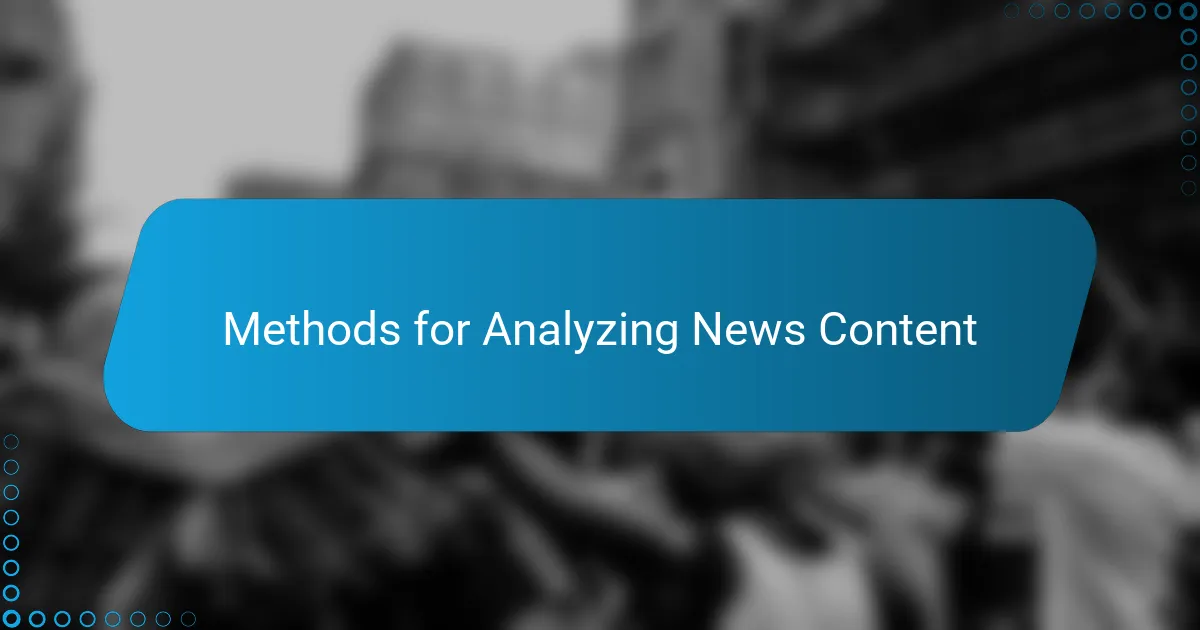
Methods for Analyzing News Content
When I set out to analyze CNN’s election coverage, I relied on content analysis as my primary tool. This meant systematically coding segments for themes, tone, and framing—asking myself, “What narratives are they pushing, and what gets left out?” It’s like piecing together a puzzle, where every clip adds context to the bigger story.
I also paid close attention to language and imagery because words and visuals carry subtle biases we often overlook. Have you ever noticed how certain phrases or camera angles can shape your perception without you realizing it? Noticing these details helped me see beyond the surface and question the intentions behind each broadcast element.
Finally, cross-referencing with independent data and reports became a crucial step. By comparing CNN’s claims and emphasis with external facts, I could judge the accuracy and balance of their coverage. This method kept me honest and grounded, reminding me that rigorous analysis means challenging even the most trusted news sources.
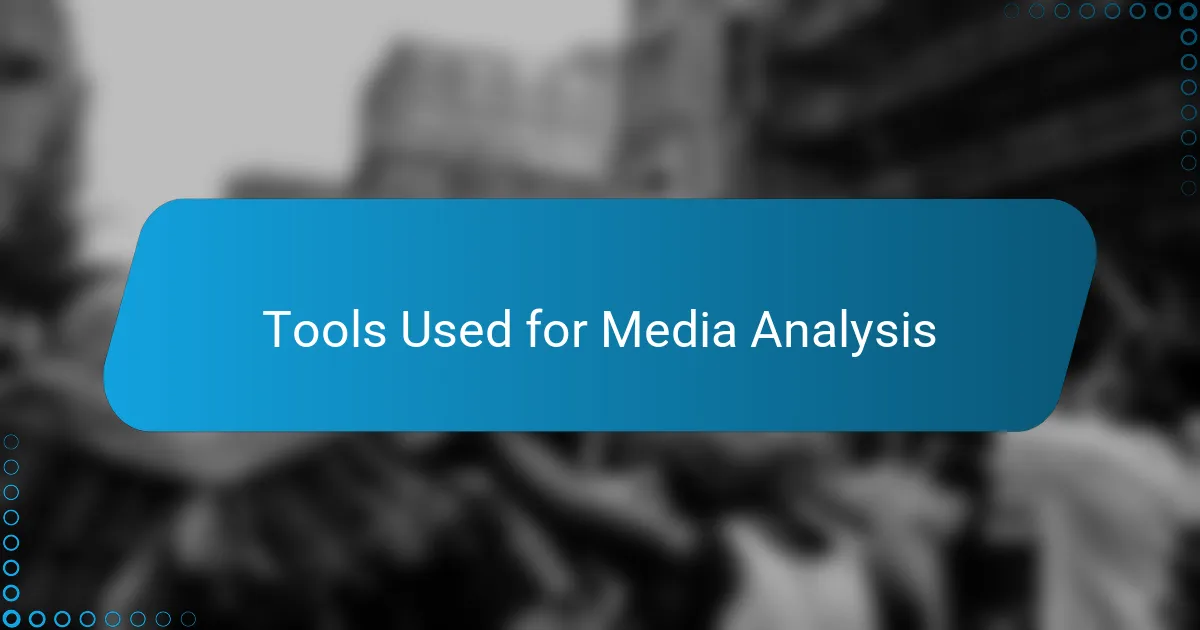
Tools Used for Media Analysis
Diving into the tools I used for media analysis felt a bit like assembling a detective’s toolkit. I turned to software like NVivo to help me organize and code the massive amounts of CNN footage and transcripts—it made spotting recurring themes and subtle biases less overwhelming. Have you ever tried manually tracking hundreds of data points without losing your mind? This kind of digital help was invaluable for staying on top of details.
I also relied heavily on sentiment analysis tools to gauge the emotional undertones embedded in the reporting. It’s fascinating how algorithms can detect shifts in tone that even my own ears sometimes missed. But I always reminded myself not to lean on these tools blindly—they’re guides, not oracles, and combining their output with my own critical judgment led to richer insights.
Lastly, I incorporated fact-checking platforms to verify claims and statistics that popped up during broadcasts. There were moments when what CNN reported didn’t quite align with independent data, and having that cross-verification gave me the confidence to call out inconsistencies. Doesn’t it feel empowering to have something solid to back up your doubts? That’s exactly what these tools did for me during the analysis process.
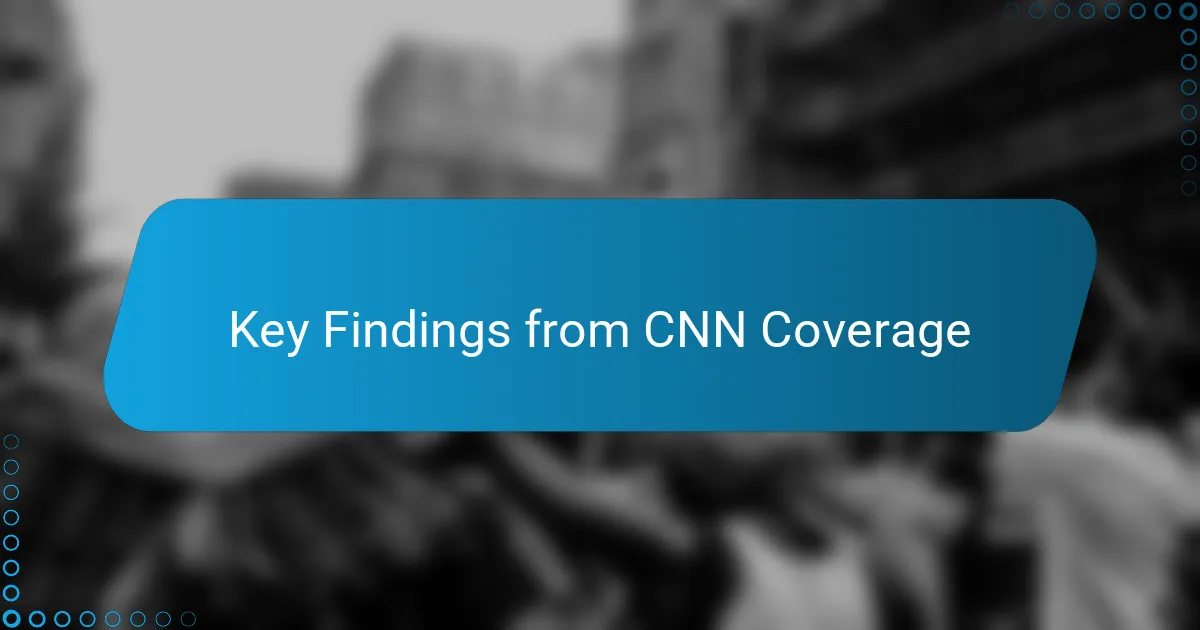
Key Findings from CNN Coverage
What stood out to me most in CNN’s election coverage was their tendency to prioritize immediacy over depth. I kept wondering, does the race to be first with results sometimes overshadow the fuller context voters need? This push for speed definitely made parts of the coverage feel rushed, leaving me craving more nuanced discussions about what those numbers really meant.
At the same time, I noticed how CNN’s framing often spotlighted certain candidates and controversies while giving less airtime to systemic issues like voter access or campaign finance. Have you ever caught yourself feeling like some stories just don’t get the attention they deserve? That selective focus shaped my sense of what felt important—and what quietly slipped through the cracks.
On a positive note, I appreciated their use of data visuals and graphics that helped break down complex information. It was like having a map for an otherwise tangled electoral landscape. Still, I found myself wondering if sometimes these flashy elements distracted from the deeper stories behind the numbers—stories that deserve just as much, if not more, scrutiny.
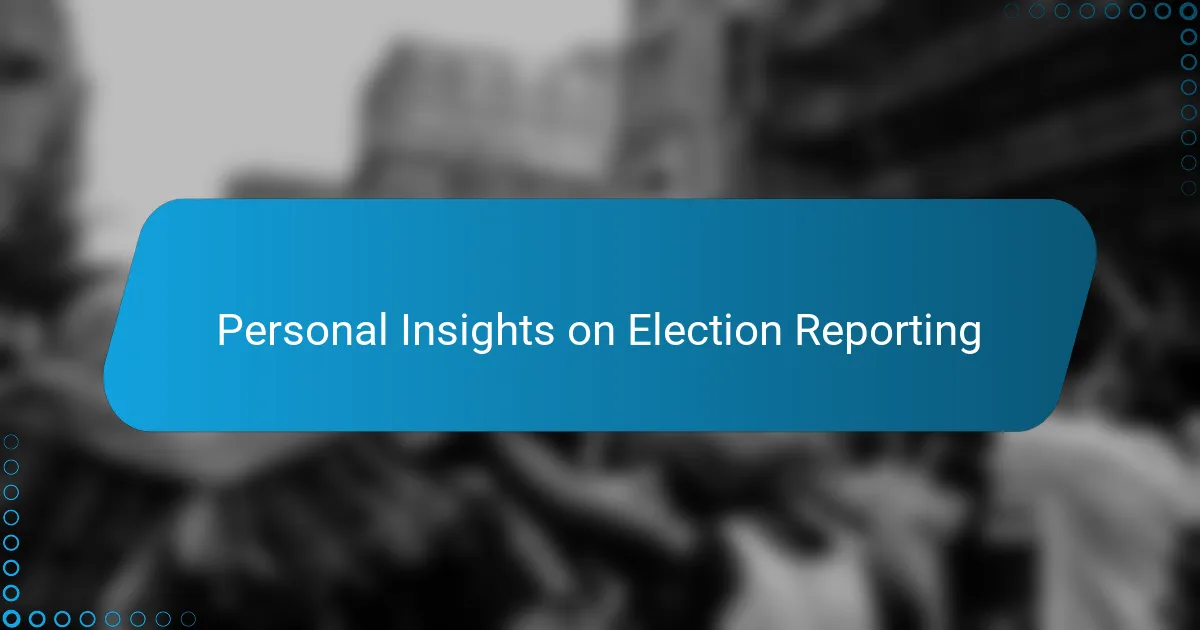
Personal Insights on Election Reporting
One thing that struck me while analyzing CNN’s election reporting was how much my own expectations shaped my reactions. I found myself getting impatient with coverage that seemed too sensational or rushed, yet I also caught the thrill of those live moments where results poured in unexpectedly. It made me realize election reporting isn’t just about facts—it’s a shared emotional experience between the network and the audience.
Sometimes, I wondered if I was reading too much into the framing choices or if there really was a pattern in whose stories received more airtime. For example, when CNN focused repeatedly on certain candidates or dramatic controversies, I felt both drawn in and skeptical. Have you ever felt that tug? That mix of engagement and doubt pushed me to dig deeper rather than accept things at face value.
Reflecting personally, I noticed that election coverage often feels like a balancing act between informing and entertaining. There were moments I appreciated the clarity brought by CNN’s graphics and expert panels, but other times the fast pace left me craving more context and less hype. This tension made me appreciate the complexity of election reporting—and the importance of approaching it with both curiosity and caution.
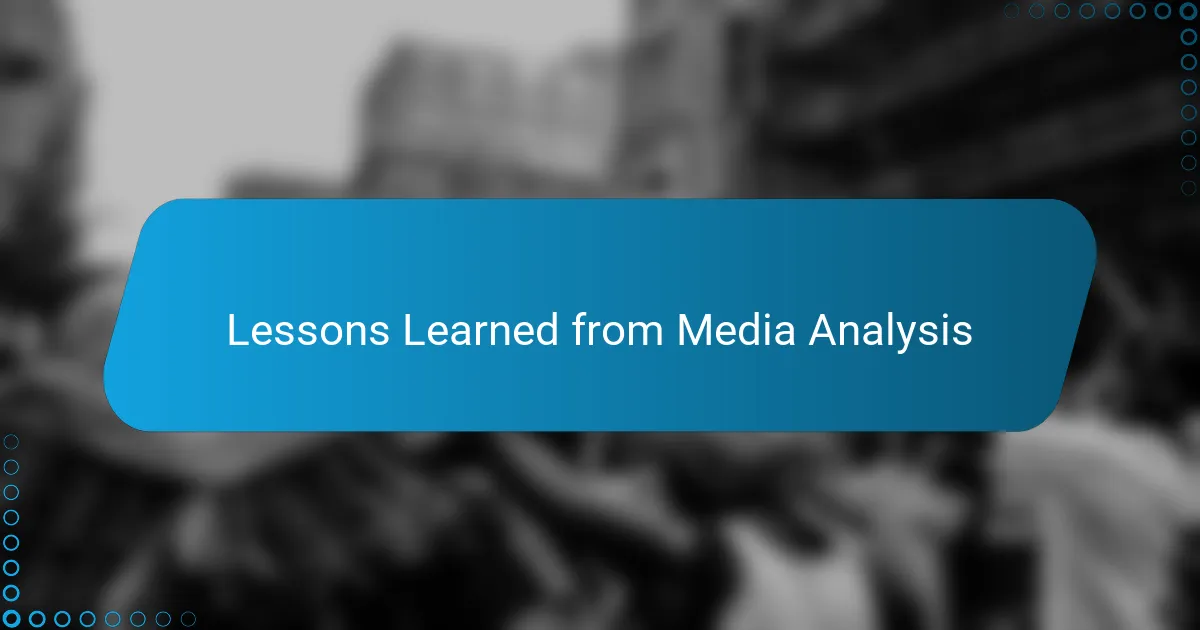
Lessons Learned from Media Analysis
What really struck me was how crucial it is to maintain skepticism even when dealing with trusted sources like CNN. I found myself constantly questioning not just what was said, but how it was presented. Have you ever caught yourself nodding along to a narrative only to later realize some key perspectives were missing? That moment of doubt became a powerful tool in my analysis.
I learned that media coverage, especially during elections, often walks a tightrope between storytelling and information. Balancing urgency with depth isn’t easy, and from my experience, recognizing where that balance tips can reveal a lot about underlying editorial priorities. It made me more aware of the need to seek out multiple viewpoints to get a fuller picture.
Finally, this analysis reinforced something I’d long suspected: visuals and data can both clarify and conceal. I remember moments when a flashy graphic made complex results seem straightforward, but digging deeper showed me what wasn’t being said beneath those numbers. It left me thinking – how often do we accept what looks clear at first glance without questioning the silent stories behind it?
